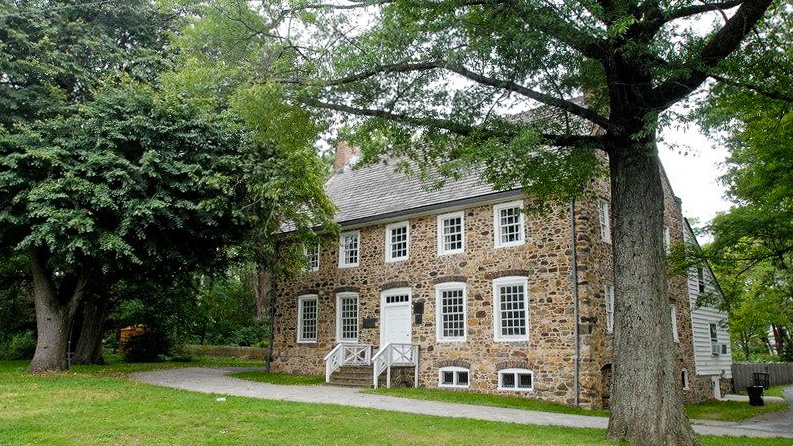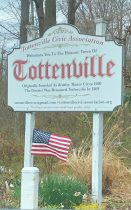 Located on the southernmost point of Staten Island, and New York City & State, the Conference house is a staple of both the borough of Staten Island and especially the residents of Tottenville in which it is located. Tottenville, the southernmost settlement in the city and state, originally called Bentley Manor, was a prosperous maritime and agricultural hub for some time throughout the 19th century, producing anything from strawberries and potatoes to oysters and ships[1]. During the early 20th century Tottenville would see industrialization come to its doorstep with the opening of multiple plants and the opening of the Outerbridge Crossing in 1928[2]. In the modern, 21st century, Tottenville is home to many small businesses, restaurants, schools, and more. Through these developments of the past centuries, Tottenville however still shares its rich history from the days of the Dutch Settlements & the Revolutionary War to the later 19th century homes that litter the Tottenville area. The Conference House, and the park surrounding it, are reminders to the people of Tottenville and that of New York City, that their history is diverse and in many ways, inspiring.
Located on the southernmost point of Staten Island, and New York City & State, the Conference house is a staple of both the borough of Staten Island and especially the residents of Tottenville in which it is located. Tottenville, the southernmost settlement in the city and state, originally called Bentley Manor, was a prosperous maritime and agricultural hub for some time throughout the 19th century, producing anything from strawberries and potatoes to oysters and ships[1]. During the early 20th century Tottenville would see industrialization come to its doorstep with the opening of multiple plants and the opening of the Outerbridge Crossing in 1928[2]. In the modern, 21st century, Tottenville is home to many small businesses, restaurants, schools, and more. Through these developments of the past centuries, Tottenville however still shares its rich history from the days of the Dutch Settlements & the Revolutionary War to the later 19th century homes that litter the Tottenville area. The Conference House, and the park surrounding it, are reminders to the people of Tottenville and that of New York City, that their history is diverse and in many ways, inspiring.

The history of the Conference House dates all the way back to the late 17th century, when it was first built by Christopher Billop, who had been an officer in the Royal Navy at the time. In command of a ship he called the “Bentley”, he and his men sailed along the island securing it for the Duke of York and “in gratitude for the service rendered him, bestowed upon Billop a tract of 1163 acres of land in the extreme southern part of the island, which was called the “Manor of Bentley”, after the ship which had accomplished the task.”[3] As an officer, Billop was able to acquire land in Staten Island[4] and would soon build the house and maintain the properties surrounding it. Though the land was his by patent, he did however have some minor problems during the transition from Dutch to English which were soon rectified.
Though Billop would die in 1725, the home and property would be left with the family throughout the Revolutionary War when the British forces, led by General Howe, would secure, and hold the entire island. The great-grandson, Christopher Billop, a loyalist, would play a significant role in removing rebels from the island, and would fight in New Jersey as well, before being captured. Billop, the great-grandson of the original founder of the Manor of Bentley and builder of the Billop house, as it was formerly called, became known as a die-hard loyalist (something that would impact the home and property for years to come), and would be commissioned as a Colonel in the New York Militia & Royal Army as well as Superintendent of police on the Island[5].
At the outbreak of the war, like most homes in the British-occupied colonies, Royal soldiers would use the home as a barracks, and it would be frequented by many high-ranking military officials such as Lord Howe, the Commander in Chief of all British Forces during the American Revolution[6]. By the summer of 1776, after over a year since the first shots had been fired at Lexington and Concord, members of the Continental Congress and that of the British Royal Forces would convene at the Billop House to discuss a possible end to the war in the American Colonies.
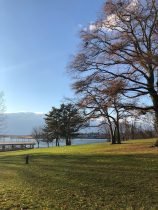
“Benjamin Franklin, of Philadelphia; John Adams, of Massachusetts, and Edward Rutledge, of South Carolina, were appointed as such committee.”[7], and in September of 1776, these three well-known members of Congress would make their way to Staten Island and specifically the Billop House, as requested by Mr. Franklin who had been good friends with General Howe before the war. Though this meeting as first glance seemed rather uneventful leading up to it, the Billop House was at a rather contested point along the southern shore of British occupied Staten Island and there would be exchange of rifle and artillery fire across the bay from New Jersey throughout the months leading up to the meeting. Upon arrival at the Billop house, the three members of Congress were greeted rather kindly and accepted into the home, likely due to Franklin’s long history as friend to Lord Howe. Lines of soldiers and artillery pieces made up the front property of the home which sat overlooking the property, a frightening sight likely for the three men who led the charge against British occupation in America.
The Conference held at the Billop house would begin on September 11th, 1776 (some sources say the 14th) with the four gentlemen: John Adams, Benjamin Franklin, Edward Rutledge, and most importantly General Howe.
Howe met the committee in a courteous manner, and at once proceeded to explain the nature of the power with which he had been invested, which was simply to extend the royal clemency and full pardon to all repentant rebels who would lay down their arms and return to their allegiance.[8]
Of course, the three members of the rebel congress would not so easily accept his terms of a surrender and end to the hostilities. And within the report given to the Continental Congress, the members reminded the general the repeated petitions of the colonies to the king and parliament which would go answered with repeated injuries[9]. With the end to the conference, and an end to what likely both parties knew would happen, the congressmen would walk past the soldiers and artillery once again, and a conversation between Mr. Adams and General Howe would take place in that very instant:
On the way down, his lordship again expressed his regret that he was unable to regard them as public characters, to which Mr. Adams replied, “Our lordship may consider me in what light you please, and indeed, I should be willing to consider myself for a few moments in any character which would be agreeable to your lordship, except that of a British subject.” To his Howe replied, “Mr. Adams appears to be a decided character.”[10]
While the conference at the Billop house had been a failure regarding the reason why they came to this meeting, it was however a victory for the Continental Congress and the newly found country. This was the first time that the new United States would be recognized as an independent and sovereign nation, separate from Great Britain. Continuing with the significance of the meeting, the conversation between the two men, Adams and Howe, would be published within newspapers and gazettes for all to read, and it made Adams truly well-known as a fearless spirit and the “first minister plenipotentiary of the new government of the United States of America”[11].
After the war, Christopher Billop, who had been dubbed the “Loyalist Colonel”, would return to his land, where he would find many patriots, angered at his unwavering support of Great Britain and for his actions against the rebels during the war. In 1784 Bentley Manor and the land owned by the Billops would be confiscated and sold in 1785[12] and like most loyalist families in the United States, the Billops would leave New York for Canada, and the house and the properties would be left unkept and uncared, for decades. For many, the Billop house served as a reminder of Royal tyranny over the United States, and tyranny over the people of New Jersey especially, who had been affected greatly by Colonel Billop and the Royal forces during the war.
It wasn’t until 1925, when the people of Staten Island and Tottenville urged the city to purchase the house and land to conserve and restore the property, due to its national and local historical significance[13], and in 1926 New York City would officially purchase the home and begin the restoration of it. Not only would the city purchase the home but would also create the Conference House Park the same year. And in 1937, the restoration of the house was finally completed, later being declared a National Historic Landmark in 1966[14].
Today, people from around the world can come and visit the Conference House and Park which has been heavily renovated time and time again. While the house is restored back to its old glory of the late 17th century, the park surrounding it has been renovated and trails for people to walk and ride their bicycles have been made. The beach along the shore is open for all and it is a spot many use to fish and relax during the summer. The newest addition to the Conference House Park is the pavilion which was added just a few years ago, which gives visitors a fantastic view of the water, a look across to New Jersey, and Perth Amboy. Though COVID-19 has slowed down tours of the Conference House and the surrounding areas, it has recently started to pick back up again for people to come and visit inside the old home. There are events throughout the year and reenactments take place every so often, and it is really a place for Staten Islanders and the residents of Tottenville to come, enjoy the weather, walk the dogs, and relax.
Various photos I have taken:

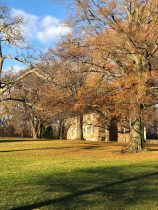

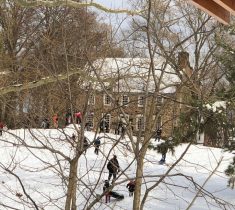
[1] Tottenville Historical Society. Accessed April 1, 2022. https://www.tottenvillehistory.com/history/tottenville-history/index.php.
[2] Ibid
[3] Richard Mathers Bayles, History of Richmond County (New York: L.E. Preston, 1887), 102.
[4] William Thomas Davis, The Conference or Billop House (The Science Press Printing Company, Lancaster PA., 1926), 47.
[5] History of Richmond County, 107.
[6] Ibid., 109.
[7] The Conference or Billop House, 22.
[8] History of Richmond County, 181.
[9] The Conference or Billop House, 28.
[10] History of Richmond County, 182.
[11] Ibid., 182.
[12] Conference House, Accessed April 3 2022, http://conferencehouse.org/about/history/
[13] PURCHASE OF BILLOPP HOUSE IS AGAIN URGED UPON CITY, New York Times, April 5, 1925.
[14] Conference House, Accessed April 3 2022
Featured Image link: Conference House Park | The Cultural Landscape Foundation (tclf.org)
Photograph of Conference House taken C. 1885: Billop house, Tottenville, Staten Island – NYPL Digital Collections
